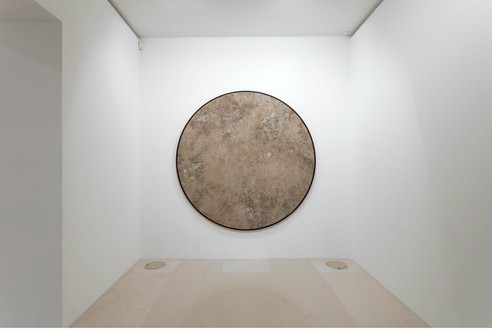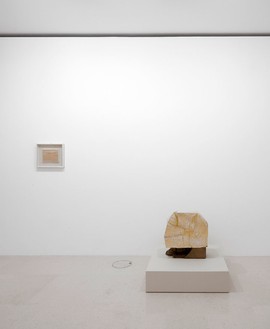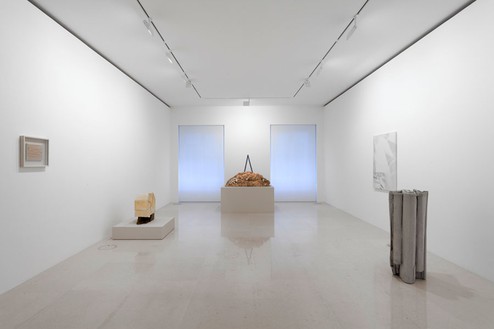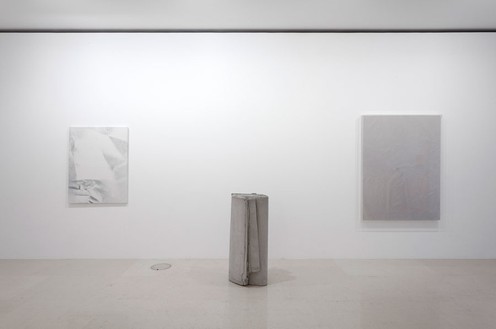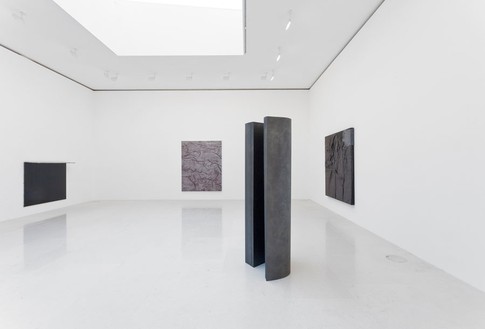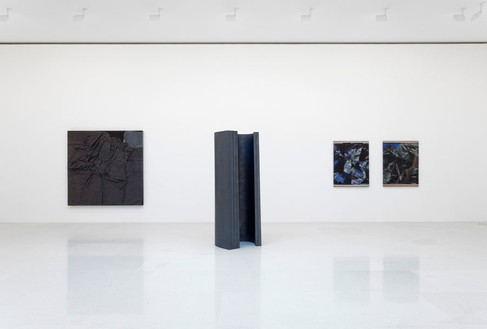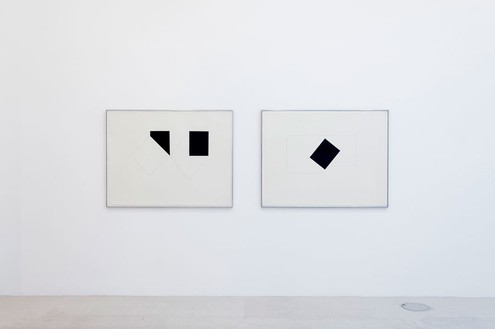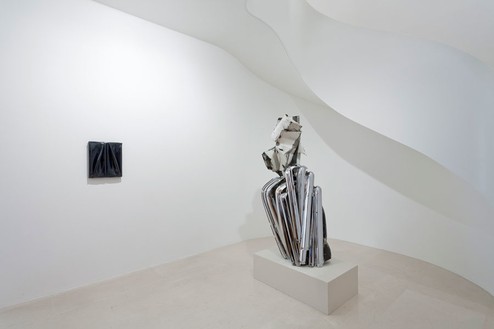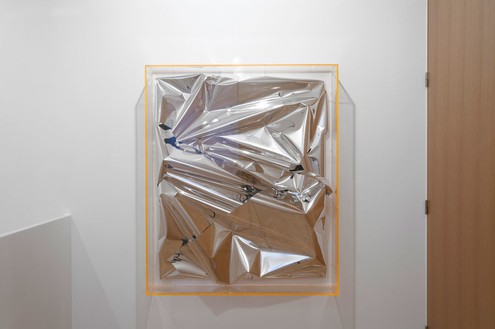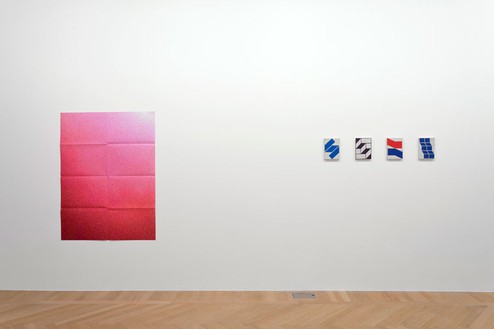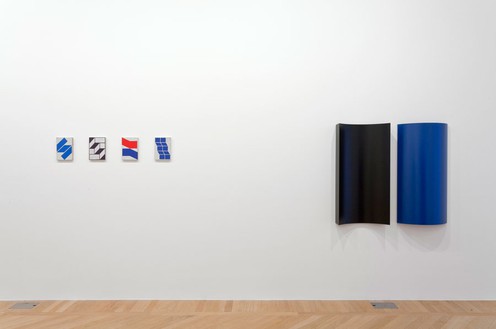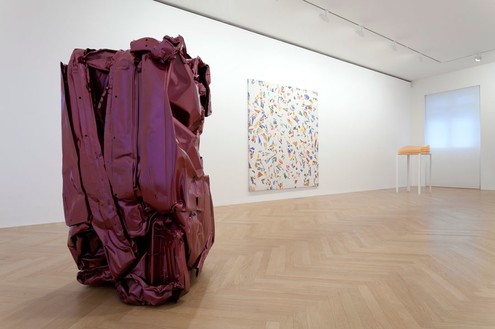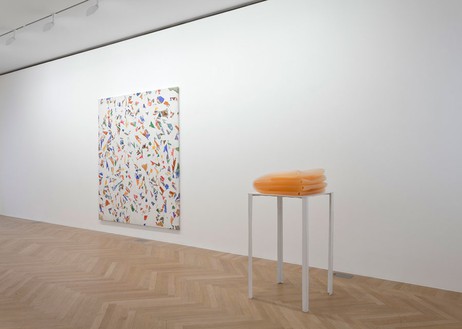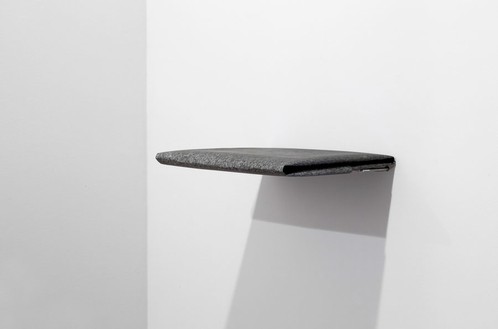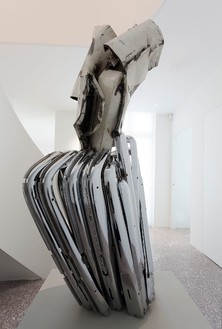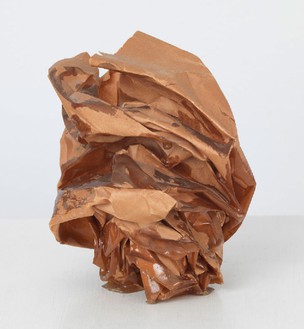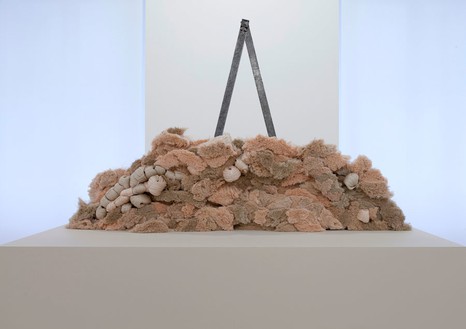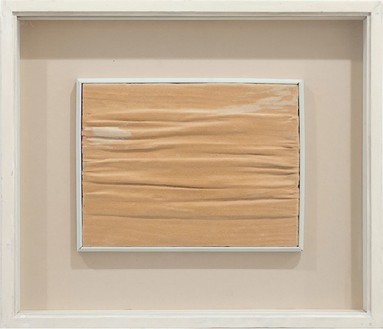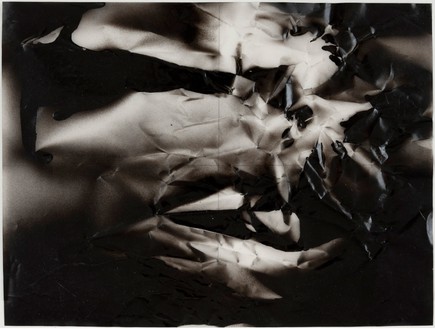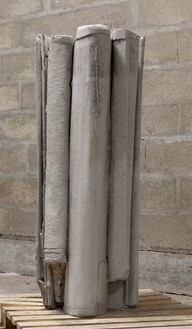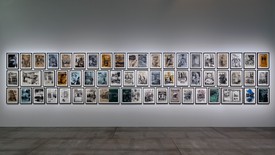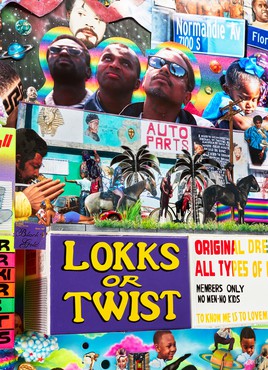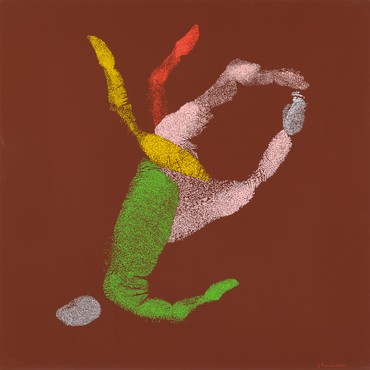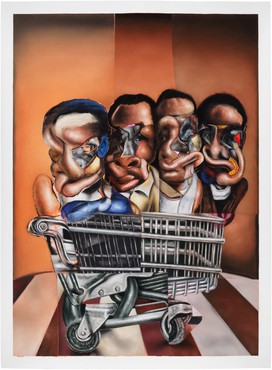About
Folding-unfolding no longer simply means tension-release, contraction-dilation, but enveloping-developing, involution-evolution.
—Gilles Deleuze
When I am folding, I am objective and that allows me to lose myself.
—Simon Hantaï
Gagosian Paris is pleased to present PLIAGE / FOLD. The exhibition will include works by Tauba Auerbach, Davide Balula, Alain Biltereyst, Tom Burr, César, John Chamberlain, William Daniels, Simon Hantaï, Sheila Hicks, Olaf Holzapfel, Sol LeWitt, Piero Manzoni, Steven Parrino, Jack Pierson, Diogo Pimentão, Charlotte Posenenske, Robert Rauscherberg, Blake Rayne, Anselm Reyler, Dorothea Rockburne, Rudolf Stingel, Tatiana Trouvé, Daniel Turner, and Rachel Whiteread.
PLIAGE / FOLD brings together artists from different generations who have explored the act of folding as both concept and formal process. Folding as action, illusion, and symbol has appeared throughout contemporary art and literature, including Simon Hantaï’s literal process of folding the canvas, dousing it in oil paint, then unfolding it to reveal inadvertent yet lyrical patterns; Gilles Deleuze’s influential meditation The Fold: Leibniz and the Baroque (1988), in which the world is interpreted as an infinity of surfaces twisting through time and space; and Tatiana Trouvé’s recent Refoldings sculptures cast from discarded and refolded packing materials.
For Robert Rauschenberg the act of folding produced Freeway Glut (1986), a muscular assemblage of manipulated industrial parts, while John Chamberlain worked lightly and in miniature with resin-coated crumpled paper. Some works involve aleatory processes that transcend artistic control, such as Hantaï’s Blanc (1974), or Davide Balula’s canvases that he immersed in soil or in rivers, allowing incidental organic residue to take hold.
Plier-déplier ne signifie plus simplement tendre-détendre, contracter-dilater, mais envelopper-développer, involuer-évoluer.
—Gilles Deleuze
Quand je plie, je suis objectif et cela me permet de me perdre.
—Simon Hantaï
Gagosian Paris est heureuse de présenter “PLIAGE / FOLD.” L’exposition inclura des œuvres de:
Tauba Auerbach
Davide Balula
Alain Biltereyst
Tom Burr
César
John Chamberlain
William Daniels
Simon Hantaï
Sheila Hicks
Olaf Holzapfel
Sol Lewitt
Piero Manzoni
Steven Parrino
Jack Pierson
Diogo Pimentão
Charlotte Posenenske
Robert Rauschenberg
Blake Rayne
Anselm Reyle
Dorothea Rockburne
Rudolf Stingel
Tatiana Trouvé
Daniel Turner
Rachel Whiteread
L’exposition “PLIAGE / FOLD” rassemble des artistes de différentes générations ayant exploré l’action de plier en tant que processus à la fois conceptuel et formel. Le pliage comme action, illusion, et symbole s’est déployé à travers l’art et la littérature contemporaine, depuis le procédé littéral du pliage de la toile de Simon Hantaï, en la trempant dans la peinture à l’huile, puis en la dépliant pour laisser apparaître des motifs aussi inattendus que lyriques; à l’influente méditation de Gilles Deleuze Le Pli: Leibniz et le Baroque (1998), dans lequel le monde est interprété comme une infinité de surfaces se tordant à travers le temps et l’espace; aux récentes sculptures de Tatiana Trouvé, Refoldings, moulées à partir de matériaux d’emballage jetés et repliés.
Pour Robert Rauschenberg, l’acte de plier a permis Freeway Glut (1986), un assemblage puissant d’éléments industriels; tandis que John Chamberlain a travaillé légèrement et en miniature à partir d’un papier froissé enduit de résine. Certaines œuvres impliquent un processus aléatoire qui transcende le contrôle artistique, comme Blanc (1974) de Simon Hantaï, ou encore les toiles de Davide Balula, plongées dans la terre ou dans des rivières, laissant des résidus organiques fortuits se déposer.
D’autres artistes ont plié du papier, de la toile et d’autres matériaux afin de produire de nouvelles formes en trois dimensions. Dans Untitled (1971), Sol Lewitt a plié un papier blanc, créant ainsi un quadrillage minimaliste; presque quarante ans plus tard, Tauba Auerbach a légèrement vaporisé depuis différents angles une toile pliée puis l’a remise à plat afin de créer une impression de lumière réfléchie indirectement (Untitled Fold Painting VII, 2009). Zwei Räume / Deux chambres (Peach) (2008) d’Olaf Holzapfel, qui ressemble à une couverture épaisse, pliée avec soin, se révèle être du Plexiglas chauffé et manipulé.
Enfin, le rôle de la forme sacrificielle est présent dans la genèse du pli: dans Untitled (2010), Rudolf Stingel a peint sa toile à la bombe à travers une couche de gaze froissée et chiffonnée, qu’il a ensuite enlevée pour révéler l’empreinte qui en résulte; Folded, titre de la sculpture en plâtre de 2004 de Rachel Whiteread, fait allusion à la réalisation de la forme sacrificielle plutôt qu’à l’objet final en plâtre. En inversant la relation entre contenant et contenu, elle traduit les nuances de l’espace vide en une matière solide. Dans cette exposition, le pliage est montré comme un processus artériel à travers lequel des œuvres s’adressent à elles-mêmes littéralement ou symboliquement.

Rachel Whiteread: … And the Animals Were Sold
An installation by Rachel Whiteread in the Palazzo della Ragione, Bergamo, Italy, commissioned by Galleria d’Arte Moderna e Contemporanea di Bergamo and cocurated by Lorenzo Giusti and Sara Fumagalli, opened in June of 2023 and ran into the fall. Conceived in relation to the city, the architecture of the site, and the history of the region, it comprised sixty sculptures made with local types of stone. Fumagalli writes on the exhibition and architect Luca Cipelletti speaks with Whiteread.
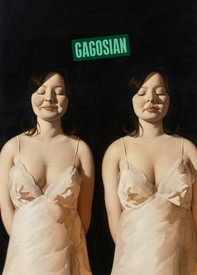
Now available
Gagosian Quarterly Winter 2022
The Winter 2022 issue of Gagosian Quarterly is now available, featuring Anna Weyant’s Two Eileens (2022) on its cover.
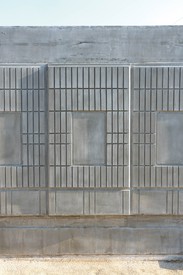
Rachel Whiteread: Shy Sculpture
On the occasion of the unveiling of her latest Shy Sculpture, in Kunisaki, Japan, Rachel Whiteread joined curator and art historian Fumio Nanjo for a conversation about this ongoing series.They address the origins of these sculptures and the details of each project.
Tatiana Trouvé: Le grand atlas de la désorientation
In this video, Tatiana Trouvé provides an overview of her latest installation, presented at the Centre Pompidou, Paris. The exhibition, whose title translates to The Great Atlas of Disorientation, includes a selection of drawings and sculptures that create fantastical landscapes where reality engages in infinite exchanges with its doubles.
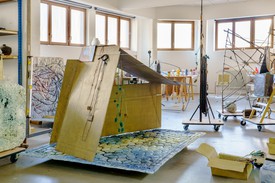
In Conversation
Tatiana Trouvé and Jean-Michel Geneste
Tatiana Trouvé speaks with Jean-Michel Geneste, archaeologist and curator, about the paradoxes of her practice: absence and presence, the ancient and the contemporary, the natural and the human-made.
Tatiana Trouvé: The Residents
Tatiana Trouvé discusses her installation The Residents (2021), commissioned by Artangel for the exhibition Afterness on Orford Ness, a former military testing site in Suffolk, England
